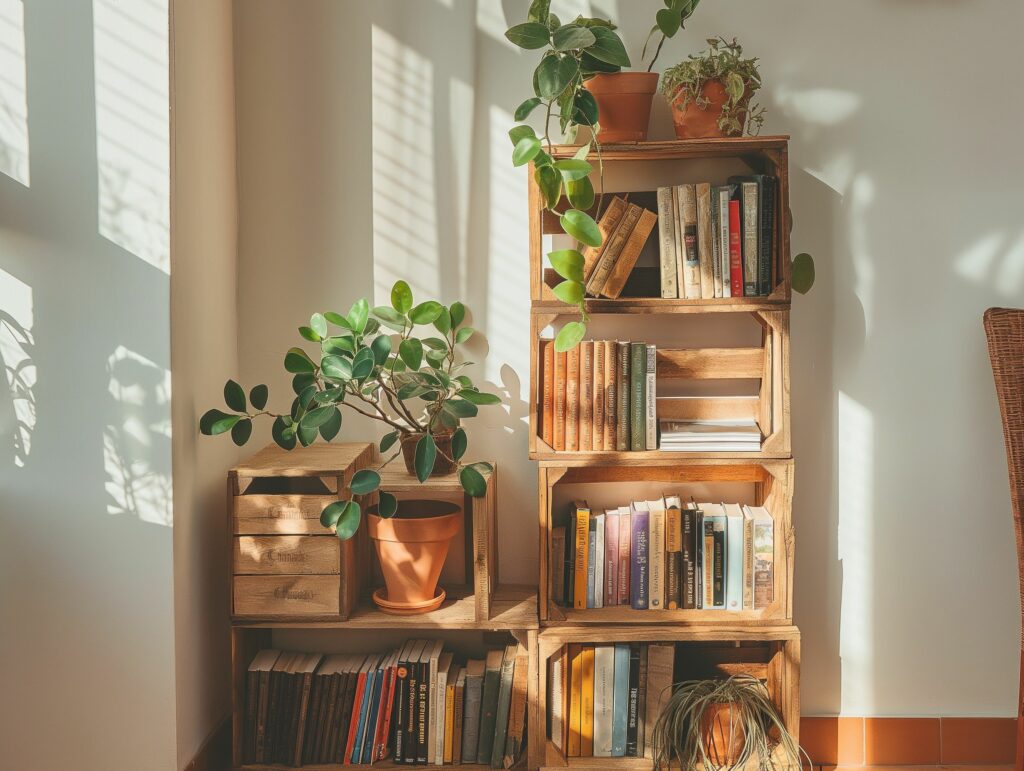That scuffed dresser in the garage or the dated coffee table collecting dust in the corner might not look like much—but with a little creativity, they could become your home’s newest showpieces. You just need to learn the art of upcycling your home decor.
Upcycling, the practice of transforming old or unwanted furniture into something fresh and functional, is more than just a budget-friendly DIY trend. It’s a sustainable way to furnish your home, reduce waste and add a personalized touch to your space.
Unlike recycling, which typically breaks materials down before reusing them, upcycling keeps the original item intact while giving it a makeover. Think painting, refinishing, reupholstering, or even reimagining a piece entirely—like turning a headboard into a bench or a bookshelf into a bar cart.
Why upcycling is having a moment
Upcycling at home has surged in popularity thanks to a mix of economic and environmental factors. New furniture prices have climbed in recent years, making the appeal of repurposing what you already own even stronger.
On top of that, more households are embracing sustainability. According to the Environmental Protection Agency, Americans discard more than 12 million tons of furniture and furnishings every year. Upcycling your home decor helps cut down on landfill waste while giving you a chance to express your style.
It’s also deeply satisfying. There’s something rewarding about taking a piece destined for the curb and turning it into something beautiful. It’s part creative outlet, part treasure hunt, and part home improvement—all rolled into one.
Upcycling your home decor is easier than you think
You don’t need to be a professional woodworker to try upcycling. In fact, many of the most impressive projects start with just a few basic things you can get at Home Depot or similar hardware hardware store: sandpaper, a paintbrush and some elbow grease. Chalk paint is a favorite among beginners because it requires little to no prep and adheres to almost any surface. Need inspiration? Sites like Pinterest, Instagram, and YouTube are full of tutorials that walk you through every step.
Start small. An old side table or wooden chair makes a great first project. Clean it thoroughly, remove any hardware, and lightly sand it if needed. From there, the creative decisions are yours: go bold with a bright color, stick to a classic stain, or mix patterns and textures for something completely unique.

Tips to make your project a success
- Choose solid bones. Look for sturdy, well-made furniture—even if the finish is dated. Solid wood is best for sanding and staining.
- Don’t skip prep. A good cleaning and light sanding can make all the difference in how paint or stain adheres.
- Use quality products. Investing in good brushes, paint, and sealant will save you time and effort in the long run.
- Let function lead form. Think about how the piece will be used and let that guide your choices. A bench for the entryway? Opt for durable finishes. A nightstand? Get creative with color.
Top 5 easy upcycling projects
If you’re ready to take the leap, here are some of the easiest projects to tackle when it comes to upcycling your home decor:
1. Painted nightstand. An outdated nightstand can be revived with a coat of chalk paint and new knobs. It’s a low-risk, high-reward project that can add personality to a bedroom or guest room.
2. Crate bookshelf. Wooden crates, often found at craft stores or farmer’s markets, can be stacked and secured together to create a rustic bookshelf or toy organizer. Stain them for a farmhouse look or paint them in bold colors for a playful vibe.

3. Dining chair refresh. Swap out worn seat fabric for something new—think patterned canvas or faux leather—and repaint or re-stain the frame. You’ll be surprised how different the whole set can look.
4. Dresser-to-buffet conversion. Remove a few drawers, add baskets or open shelving, and give the whole piece a fresh coat of paint. Suddenly that old bedroom dresser becomes a stylish entryway or dining room buffet.
5. Window frame wall art. Vintage window frames (even cracked ones) can be transformed into shabby-chic wall décor. Add a mirror, mount family photos behind the panes, or back it with fabric for a textured accent piece.

